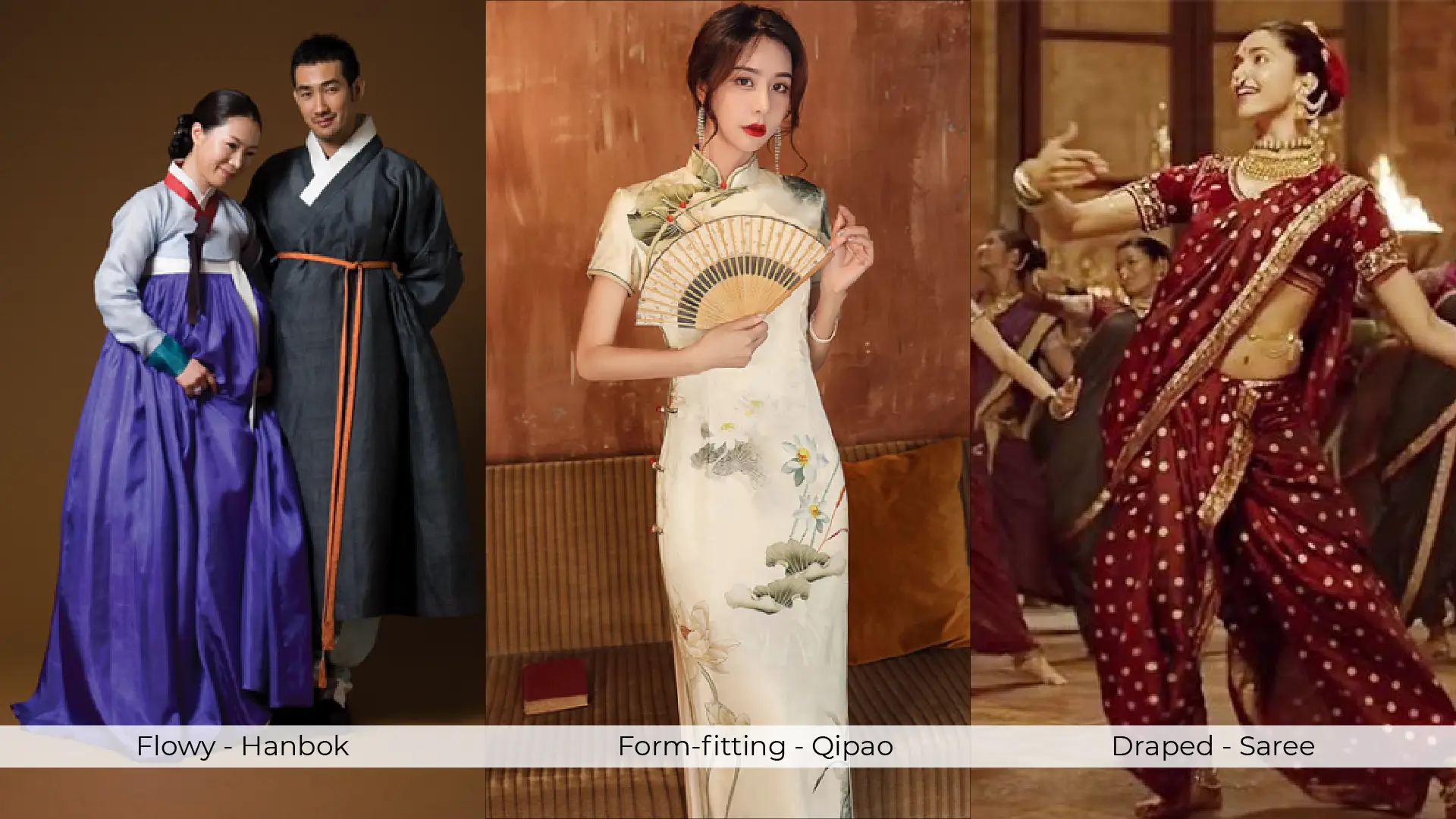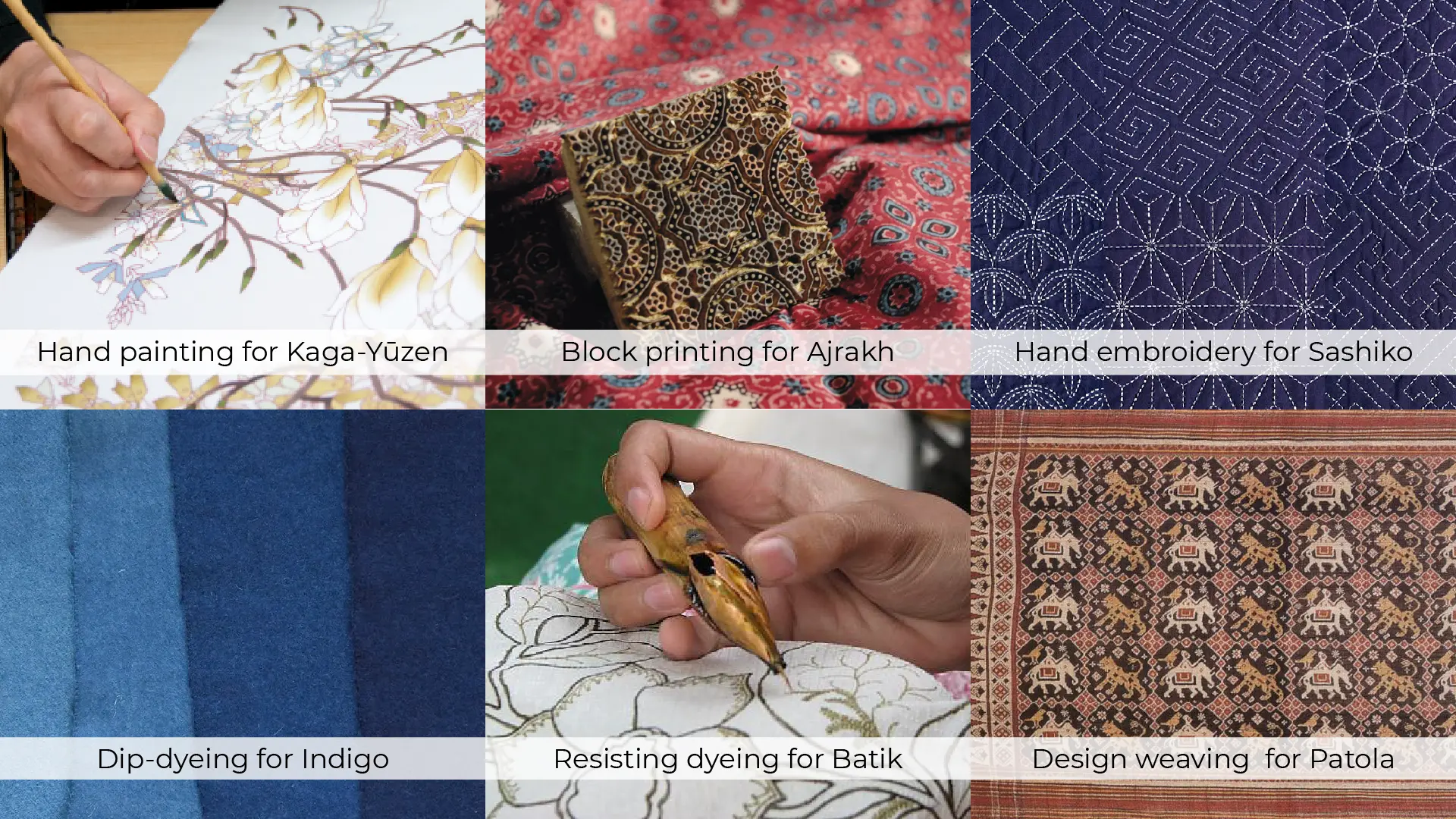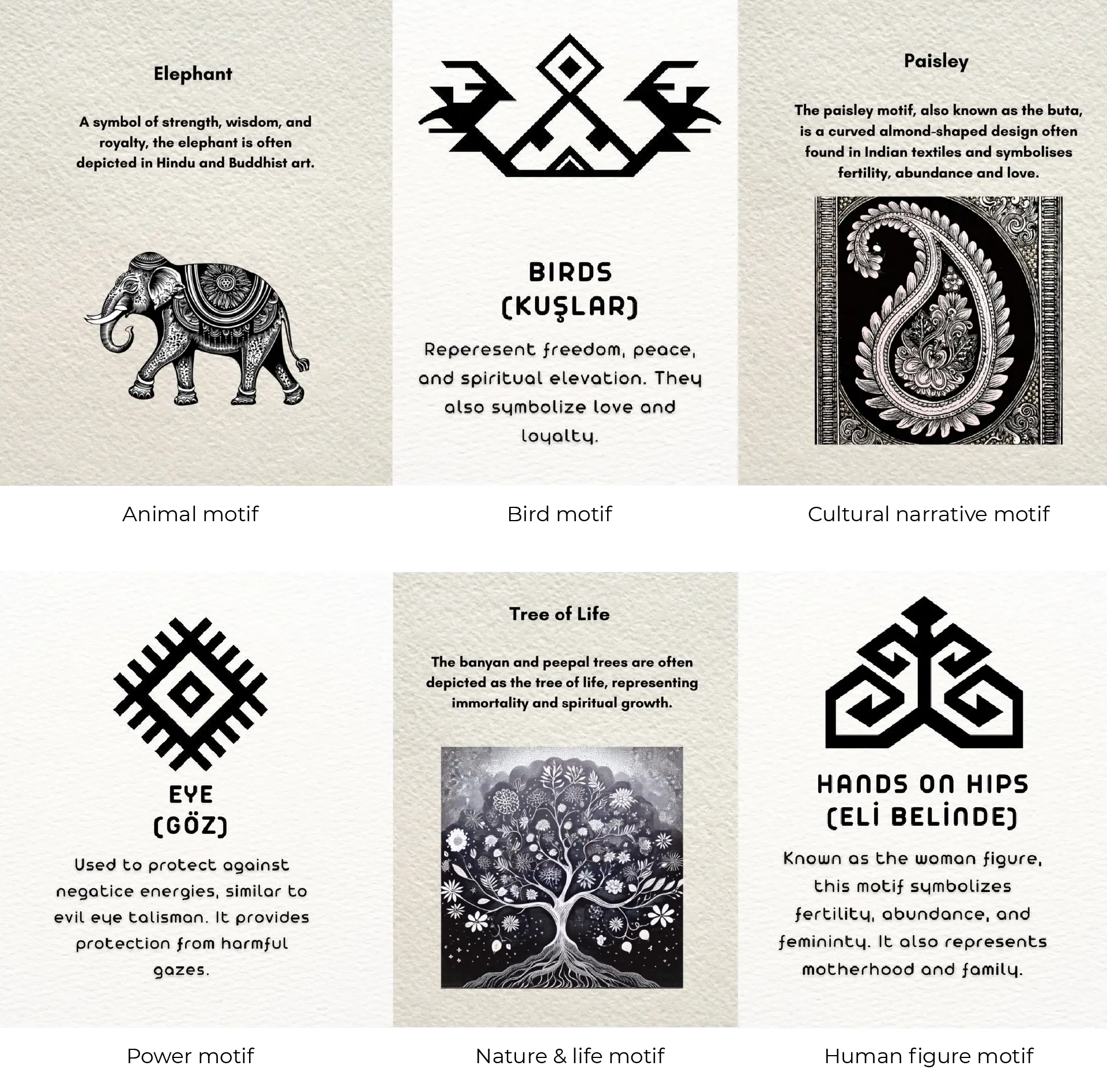Asian fashion is a vibrant and diverse world, reflecting centuries of culture, tradition, and modernity. From the elegant silk kimonos of Japan to the intricate embroidery of Indian sarees, Asian clothing represents more than just garments—it signifies identity, heritage, and artistry.
In this article I have tried to capture the diversity of Asian costumes in larger themes of costumes, textiles & storytelling. In form of structure, techniques and motifs.
Costumes & their structures

- Cheongsam/Qipao (China) - Form-fitting: A form-fitting dress symbolizing elegance and femininity.
- Hanbok (Korea) - Flowy: Known for its vibrant colors symbolising and flowing lines, representing harmony and grace.
- Saree (India) - Draped: A timeless drape that varies by region, often adorned with intricate embroidery or prints. Representing heritage, functionality and craftsmanship.
Textiles & their techniques

These 6 key techniques are used to create hundreds of different textiles. Here we have taken specific textiles to see the direct visual interpretations of the techniques.
- Kaga-Yūzen utilises hand painting: Kaga-Yuzen is a traditional Japanese textile dyeing technique, primarily used for kimonos. The technique involves a multi-step process of sketching, paste-resist dyeing, and hand-painting to create unique and detailed designs.
- Ajrakh utilizes block printing: Ajrakh is a unique and ancient form of block-printed textile, primarily known for its intricate geometric and floral patterns, traditionally made using natural dyes. The craft involves a complex, multi-stage process using hand-carved wooden blocks to print designs on fabric.
- Sashiko utilizes hand embroidery: Sashiko is a versatile Japanese stitching and embroidery technique primarily used to mend, reinforce, and embellish garments.
- Indigo colored textile utilizes Dip-dyeing: Indigo dip dyeing is a textile dyeing technique that uses an indigo vat to create various shades of blue on fabric or yarn. The process involves repeatedly submerging the material in the vat, allowing it to oxidize in the air between dips to develop the desired color depth.
- Batik utilizes resisting dyeing: Batik is made by drawing or stamping wax on a cloth to prevent colour absorption during the dyeing process. This creates a patterned negative when the wax is removed from the dyed fabric.
- Patola textile utilises design intervention in the weaving stage: Patola refers to a double ikat woven silk sari, traditionally made in Patan, Gujarat, India. These sarees are known for their intricate designs, vibrant colors, and the complex double ikat weaving technique, where both warp and weft threads are dyed before weaving.
Motifs & their meanings
There are hundreds of thousands of motifs that are symbolic of various cultural, nature and life elements. Found on textiles, crafts, architectural creations and artworks. Here are the themes seen across them.

Asian fashion is a living art form—one that adapts, inspires, and endures. Whether you’re drawn to the intricate embroidery of a lehenga, the minimalist elegance of a kimono, or the bold colors of a hanbok, there’s a piece of Asia waiting to become part of your life.
Explore our collection of Asia inspired clothing.
Sources for the article
- Kaga-Yūzen: https://www.kagayuzen.or.jp/know_en/#:~:text=The
- Batik: https://en.wikipedia.org/wiki/Batik#:~:text=Batik
- Patola: https://en.wikipedia.org/wiki/Patola_sari#:~:text=The
- Qipao: https://www.hanfusupplier.com/why-do-wear-cheongsam/
- Motifs: https://www.instagram.com/p/DAzx5ulyouO/?img_index=8&epik=dj0yJnU9NUo0c3E0VzNJUjNpZ1NVRVhrVEsyTVBJOElkYmFocjUmcD0wJm49ZmdnQTFqRFRNbE5sZ0FybVNCQmdSQSZ0PUFBQUFBR2lmRG9R , https://de.pinterest.com/pin/6333255723784985/
- Hanbok: https://www.flickr.com/photos/koreanet/4789085633/in/photostream/
- Saree - https://tulsisilks.co.in/blogs/how-to-wear-nauvari-saree--traditional-types-of-nauvari-saree-draping
- Ajrakh: https://www.bandhej.com/blog/post/kharal-weaving111111
- Sashiko: https://www.inspirationsstudios.com/news/article/the-history-of-sashiko
- Indigo: https://naturaldyes.ca/how-to-dye-with-indigo#:~:text=Generally
- Batik: https://ich.unesco.org/en/RL/indonesian-batik-00170